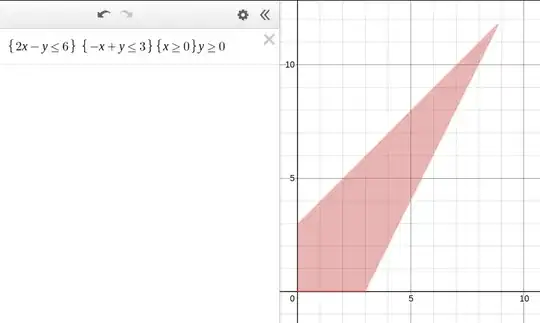Let $\alpha \in R $ . If $(3,0,0,\beta)$ is an optimal solution of LPP,
Minimize $x+y+z-\alpha t$
s.t
$ 2x-y+z=6$
$-x+y+t=3$
$x,y,z,t \ge 0 $
The the maximum value of $\beta - \alpha$ is ?
My attempt: I tried by simply plugging in the value of optimal solution in constraint equation(2nd one) and got the value of $\beta = 6$. Now to find the value of $\alpha$, I put the Min= - Max That is the problem is reduced to
-Maximize $-x-y-z+ \alpha t$
Also, it can be observed that z and t seems to be slack variables for this problem. Hence, as the problem is not Maximum type but of -Maximum type, therefore slack variables must be subtracted from the -maximization equation instead of adding.(Is this correct?)
Therefore to make the above equation as -Maximize $-x-y-z-t$ we have to put $\alpha = -1$ So, the maximum value must be 6-(-1)=7
